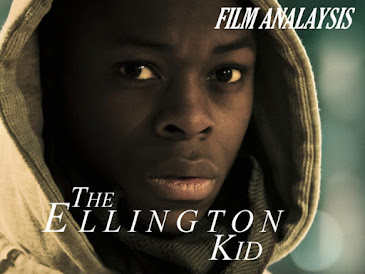The Ellington Kid
The Ellington Kid
When we were analyzing this short film, we divided it into 3 categories: Narrative, Representation and spectatorship. This is the first time we moved away from Micro Elements. Below I've listed some points we discussed for each category.
Narrative
- predictions after 10 seconds on the film and its themes: drama, death/ fighting/ injury, intense, captivating, meat/ butchers
- it begins by using storytelling to build tension and engage the audience.
- the choice to tell the film through storytelling means we assume there is a reason to the story being told as something significant is going to happen, which is exacerbated by Nathan's excitement and conviction.
- it follows a conversational tone
- begins and ends with the shot of the knife, giving it a sense of circularity and repetition
- despite the end seeming over due to the story being over, the film has an open instead of a closed one due to the camera panning to the man holding the knife. this final shot causes the audience to question whether there was in fact truth to the story, regardless of whether Nathan knows it or not.
Representation
For representation, we looked at the way each character is portrayed to the audience
- Nathan: joker, outgoing, excited
- Beefy: funny, interested, gullible
- Shop Workers: violent (sharpening and wielding of knives), dangerous
- Ellington Kid: weak, vulnerable (we pity him)
- Gang Members: dangerous, aggressive
Spectatorship
We looked at the way the camera influences the audience's judgement
- lots of close- ups rather than allowing the audience to see the full picture and instead keeping them guessing and in the dark. This aligns us with Beefy.
- We are in the Gangs POV as they follow the Ellington Kid meaning we see the constant threat
- we feel as though we are part of Nathan and Beefys friendship. The camera is on the same eyeline level as them and the over the shoulder shots involve us in their conversation.
- when in the shop we move from the POV of the Gang to the POV of the workers. We are always on the side of the dominant group allowing the audience to see the threat, building tension

Comments
Post a Comment